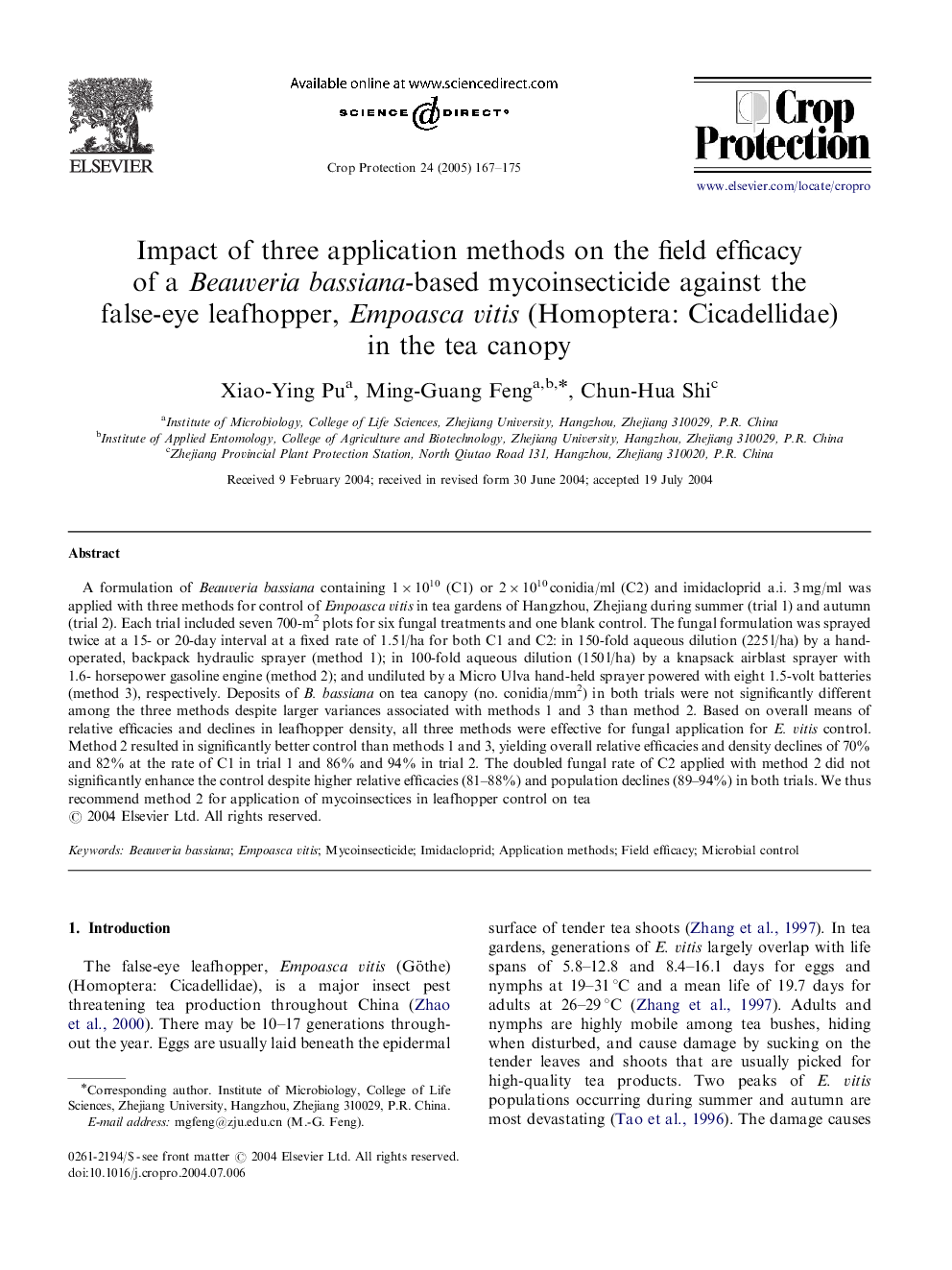| Article ID | Journal | Published Year | Pages | File Type |
|---|---|---|---|---|
| 9472861 | Crop Protection | 2005 | 9 Pages |
Abstract
A formulation of Beauveria bassiana containing 1Ã1010 (C1) or 2Ã1010Â conidia/ml (C2) and imidacloprid a.i. 3Â mg/ml was applied with three methods for control of Empoasca vitis in tea gardens of Hangzhou, Zhejiang during summer (trial 1) and autumn (trial 2). Each trial included seven 700-m2 plots for six fungal treatments and one blank control. The fungal formulation was sprayed twice at a 15- or 20-day interval at a fixed rate of 1.5Â l/ha for both C1 and C2: in 150-fold aqueous dilution (225Â l/ha) by a hand-operated, backpack hydraulic sprayer (method 1); in 100-fold aqueous dilution (150Â l/ha) by a knapsack airblast sprayer with 1.6- horsepower gasoline engine (method 2); and undiluted by a Micro Ulva hand-held sprayer powered with eight 1.5-volt batteries (method 3), respectively. Deposits of B. bassiana on tea canopy (no. conidia/mm2) in both trials were not significantly different among the three methods despite larger variances associated with methods 1 and 3 than method 2. Based on overall means of relative efficacies and declines in leafhopper density, all three methods were effective for fungal application for E. vitis control. Method 2 resulted in significantly better control than methods 1 and 3, yielding overall relative efficacies and density declines of 70% and 82% at the rate of C1 in trial 1 and 86% and 94% in trial 2. The doubled fungal rate of C2 applied with method 2 did not significantly enhance the control despite higher relative efficacies (81-88%) and population declines (89-94%) in both trials. We thus recommend method 2 for application of mycoinsectices in leafhopper control on tea
Keywords
Related Topics
Life Sciences
Agricultural and Biological Sciences
Agronomy and Crop Science
Authors
Xiao-Ying Pu, Ming-Guang Feng, Chun-Hua Shi,
